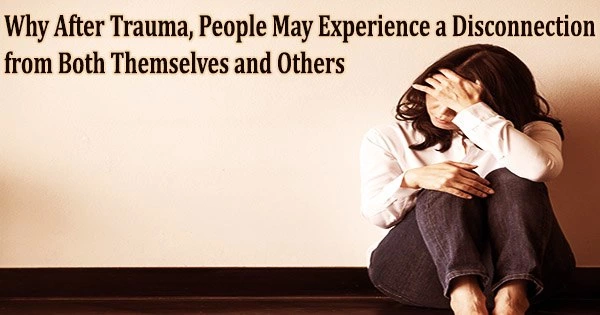Even though I had friends, I was still lonely.
My friends didn’t understand my reactions.
There was a huge void inside me.
These are a few examples of how people who have experienced trauma have felt cut off from both themselves and other people. In actuality, these are questions from the Trauma Appraisal Questionnaire (TAQ), which my research team created to gauge typical post-traumatic sensations and thoughts.
Along with guilt, self-blame, fear, wrath, and betrayal, the TAQ also evaluates estrangement. More clinical and academic attention has been given to certain of these post-traumatic appraisals than to others. For instance, both cognitive behavioral therapies and models of post-traumatic stress disorder (PTSD) have made fear a central theme.
Beyond fear, though, research points to the importance of recognizing other posttraumatic appraisals, particularly alienation.
Does Alienation Matter?
A number of different types of post-traumatic distress have links to alienation. For instance, PTSD, sadness, and the severity of the dissociation symptoms have all been linked to feeling more alienated. A number of samples, including adult and adolescent survivors of child abuse and adult survivors of intimate relationship violence, have shown links between alienation and symptoms.
A new meta-analysis that drew on nine published research that explicitly looked at the relationship between alienation and PTSD found a high effect size relationship between alienation assessments and PTSD symptoms.
Both PTSD symptoms and alienation appraisals grew over time. We can not, however, know whether increases in PTSD were driven by estrangement, or vice versa, due to the correlational nature of the studies in the meta-analysis.
People with traumatic experiences who qualified for either PTSD or Dissociative Identity Disorder were characterized by alienation (DID). Particularly, those with DID reported a greater degree of alienation than those with PTSD. This implies that complicated reactions to trauma may involve alienation.
Is It Alienation or Something Else?
Although alienation-distress relationships have been discovered in numerous investigations, understanding these connections involves evaluating related dimensions. For instance, it’s possible that the term “alienation” encompasses components of social support, loneliness, or a more general inability to recognize emotions (a condition known as alexithymia), all of which may have ties to posttraumatic discomfort. These relationships are crucial for understanding how alienation and distress are linked. By concentrating on interventions that boost social support, we might draw different conclusions from this research if, for instance, social support better explained symptoms than alienation.
Fortunately, researchers began to tease out these related constructs in a 2019 study that involved 100 college students as well as 93 adults seeking services in Northern Ireland who had survived trauma. Participants reported their trauma histories, alienation, social support, loneliness, and alexithymia as well as PTSD and depression symptoms.
Even when social support, loneliness, and alexithymia were taken into account, alienation still provided an explanation for the relationships between past traumas, post-traumatic stress disorder, and depressive symptoms. This finding implies that alienation does have some significance for comprehending post-traumatic pain.
What Are the Implications of Alienation Research for Our Response to Trauma?
If alienation is part of the harm of trauma, then connection should be part of our response.
That’s the conclusion I’ve come to based on my team’s research on community responses to intimate violence. For example, we’ve seen that outreach from victim advocates to survivors in the aftermath of intimate partner abuse predicts less distress a year later, relative to a comparison condition that offered referrals instead of outreach. A simple phone call might help survivors feel less isolated and show them that others are concerned about what happened to them.
Of course, we can each take actions to support connection after trauma, even if we aren’t victim advocates. For example, each of us can focus on listening and responding with practical help when people disclose traumas such as sexual assault to us, as I described in this recent post.
We can also change how we talk about and collaborate to address trauma, particularly intimate violence. For instance, my book Every 90 Seconds: Our Common Cause Ending Violence Against Women explores what is possible if we talk about intimate violence in open and solution-focused ways. By doing so, we communicate that survivors are not alone, that we each take the issue seriously, and that change is possible.
















